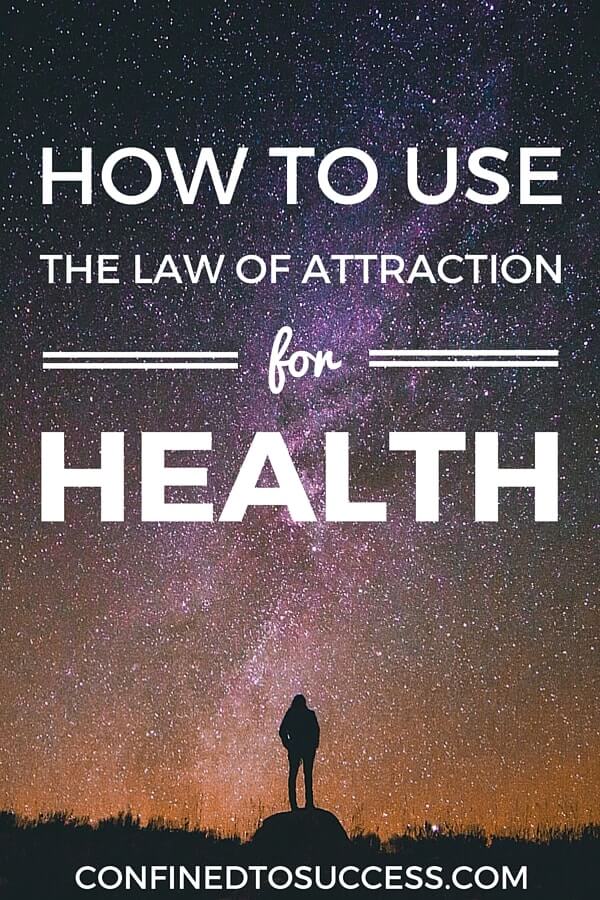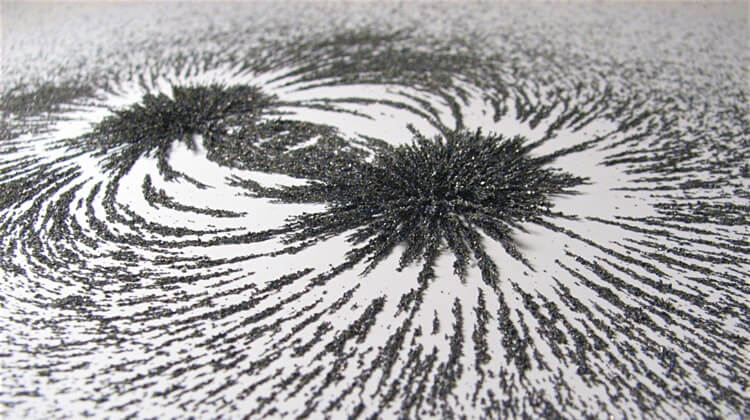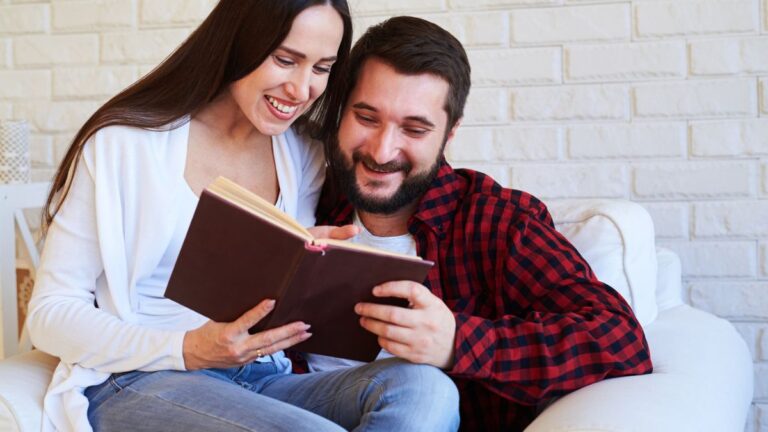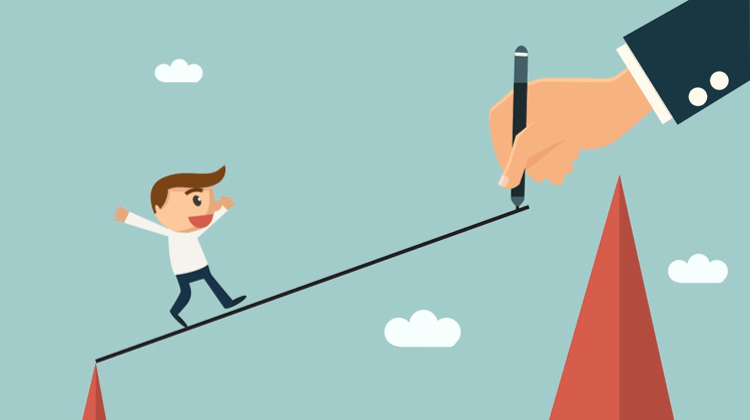How To Use The Law Of Attraction For Health

Like a lot of people, I first heard about the Law of Attraction after seeing The Secret. But unlike most, I wasn’t impressed. Sacrilege, I know. It just struck me as a lot of pie in the sky, woo-woo nonsense.
It wasn’t until several years later when I came across books that had a profound effect on me like Think and Grow Rich, The Power of Positive Thinking, The Master Key System, and others that I finally put two and two together — these books, some of which were written over 100 years ago, were earlier incarnations of the Law of Attraction!
This piqued my interest and I started delving further into this way of thinking and found a lot of it compelling but not all of it (which you’ll soon see).
Now, most information about the Law of Attraction relates to wealth but its principles apply to health as well. In this post, I’ll discuss how to use the Law of Attraction for health specifically but first let’s touch on how it works.
THE LAW OF ATTRACTION FOR HEALTH EXPLAINED
Everything in our reality is made of vibrating energy whether it’s our physical bodies or intangible matter like thoughts and feelings.
The Law of Attraction or “LOA” operates on the principle that these energies vibrate at different frequencies depending on our thought patterns — negative thoughts tending to attract lower vibrations of similar frequencies while positive thoughts tending to attract higher vibrations of similar frequencies. In other words, like attracts like.
To take it a step further, constant negative thinking tends to attract anything that vibrates at a lower level like disease while positive thoughts are more likely to attract good health.
In short, we attract what we want and don’t want depending on our thoughts . WE create our realities.
Perceiving the world this way is a welcome change to our current culture of victimhood because it makes US responsible for our lives.
That said, I strongly disagree with the notion that we have complete control over what happens to us (or else we’d be God, which sounds a bit arrogant and narcissistic if you ask me).
So why would I discuss using the LOA for health when I disagree with some of its core tenets?…
Because there’s evidence for the mind-body connection and I think practices like the LOA can help us achieve better health. Simple as that.
Now that I’ve gotten off my soapbox, let’s talk about how to use the LOA for wellness.
THE LOA PATH TO WELLNESS
Note: All the suggestions outlined below work in tandem.
Reprogram Your Subconscious Mind
The LOA has a harder time working when your subconscious mind isn’t on board with the idea. So, even though you may consciously want better health, your subconscious could be sabotaging your effort for reasons you might not even know.
If you suspect your subconscious mind getting in the way of your well-being, tackle this first to root out any deep limited beliefs. There’s no shortage of techniques to try with options like meditation, self-hypnosis, EFT Tapping, and EDNA.
Of course, there are also several classic books in the field which can help too:
- The Power of Your Subconscious Mind – Joseph Murphy
- Psycho-Cybernetics – Maxwell Maltz
- What to Say When You Talk to Yourself – Shad Helmstetter
See Yourself as Already Well
Your thoughts should be on wellness, NOT healing. What’s the difference? Well, wellness implies you’re already in perfect health whereas healing implies there’s something wrong with you which needs fixing.
So, how do you focus on wellness? One of the best ways is to practice a visualization technique where you imagine your body filled with white light, radiating perfect health and harmony. For more detail, check out this post (while the article discusses “healing,” the same principles apply for “wellness”).
The other part of the visualization process is to conjure a picture of what good health looks like for you. In other words, what would your life be like as a healthy person? Where would you live? What kind of activities would you do? Who would you spend your time with? The key to making this work is to be as detailedas possible when thinking about yourself, even down to the color of shoes you’re wearing!
But here’s the thing…it’s not enough to just go through the motions when practicing visualization. You have to feel it AND believe it. Now, that’s a tall order for many struggling with limiting beliefs which explains why reprogramming your subconscious mind is so important.
But what if you’re under the care of a doctor? Doesn’t the idea of taking medication contradict the notion of seeing yourself as the embodiment of health? Well, to a certain degree, yes. But you can learn to compartmentalize by following your doctor’s advice while maintaining thoughts and feelings of general wellness. For instance, think of the medication you’re taking as nourishing your body instead of healing it. (Under NO circumstances do I recommend severing ties with your physician!)
Practice Affirmations
Reiterating thoughts and feelings of total wellness through speech is also important as it helps reinforce the positive beliefs you’re learning to cultivate. And they don’t have to be elaborate! Simple affirmations like these can do the job just fine:
“Thank you for my good health.””I am healthy.””My body’s in perfect balance, exactly as it should be.””I am perfect and whole.”
Practice Gratitude
Try not to let thoughts and feelings of wellness dissipate the moment pain or other symptoms come up as a result of your illness. Instead, switch to the areas of your body which are working to keep you in the right frame of mind. While it might not seem so, there’s moreright with you than wrong or else you wouldn’t be alive, right?!
So, make a list of everything still working in your body, however small. Is your digestion normal? Add that to the list. Can you stand on two feet? Add that to the list. How about your hearing? You get the idea.
And don’t just limit thoughts of gratitude to your body, learn to appreciate things outside ourselves we normally take for granted like campfires, indoor plumbing, and air conditioning!
Now, if you’re anything like me, thoughts of gratitude don’t come naturally. That’s why I’m a fan of writing them down or using an app like the Gratitude Journal. It’s also a good way to record any improvements you’ve made as a result of using the LOA — remember, small victories are still victories!
Stop Giving “It” Attention
Thinking
Learn to watch your thoughts as an outside observer so you’re aware whenever your thoughts revolve around ill-health. Don’t judge the thoughts, just acknowledge them.
Reading
Are you regularly scouring the web looking for answers to your health condition? If so, you’re putting your illness front and center which you shouldn’t be doing (I’ve been guilty of this myself). At the very least, limit your attention to people who have recovered, NOT the horror stories of which there are plenty.
Talking
Try to avoid conversations about your health condition. While we all appreciate a sympathetic ear, these discussions only serve to reinforce the illness.
Avoid Negativity
Our bodies can’t tell the difference between what’s real and imagined[source] and that’s why it’s best to avoid stress where we can as it lowers our immune response and slows down healing. Same goes for anything that makes us feel down. Now, obviously these reactions and feelings are a natural part of life but we have more control over them than we think…
News/Current Events
As many of you know, it’s incredibly lonely being homebound with an illness. So, one of the ways I stay in contact with the “outside” world is by staying on top of what’s going on.
At first, I limited myself to a couple news sources which took no more than 15 minutes of my day. But it didn’t take long before I became a full-fledged news junkie, spending upwards 3 hours per day reading various blogs and watching videos. That’s not exactly a recipe for good health, to say the least.
For one thing, you develop a skewed view of the world where everything, but everything, seems terrible. While in some sense that’s true, it doesn’t account for all the good being done. And there’s a lot of it going around. [source]
This constant 24-hour news cycle causes us undue stress which can have a bad impact on our health. Now, I’m not suggesting blocking ALL of it out but try to limit your intake. One thing that’s helped divert my attention is working on this blog but of course, you could fill your time in other ways too.
Horror/Suspense Movies/TV Shows
Yup, this also hit me hard as I love these genres. But it’s not healthy to wallow in the dark and feed off the rush of nervous adrenaline. Stick to comedies and other “feel good” material for entertainment.
Violent Video Games
I’m not a “gamer” so this doesn’t affect me but if you are, stick to games which don’t elicit a negative physiological response. [source]
Nihilistic/Depressing Music
Whatever you do, stay away from Norwegian Black Metal music as you’ll find yourself looking for the nearest bridge! 😛
PUTTING THE LOA INTO ACTION
While I believe positive changes can happen as a result of putting LOA principles into action, the fact is not everyone sees them manifest in their physical bodies. The LOA community would explain this as a lack of effort or even conviction but I’m not convinced of it.
Still, at the very least, you’ll likely attain inner peace where you’ll feel more at ease, less fearful, and better at coping with your health condition. For that alone, it’s worth pursuing. But simply reading about the LOA won’t get you far. It requires regular practice so here’s what I suggest…
- Visualization – 2x per day at 10 minutes or more per session. You can also use vision boards or mind movies to help create the life you want.
- Gratitude – Write down 3 things you’re thankful for first thing in the morning or right before bed.
- Affirmations – Whenever you catch yourself in the mirror, recite an affirmation (well, maybe not in public bathrooms!)
Now, there may be times when you can’t commit to these steps and that’s fine, you won’t lose ground by skipping a day or two. But sometimes the problem isn’t about finding your routine, it’s not having someone to guide you.
Let me explain…
I first heard about using the LOA for health reasons through a book published way back in 1910 called The Science of Being Well by Wallace D. Wattles. To put it mildly, its wisdom blew me away. The version I read was an updated one by Dr. Alexandra Gayek, an American Naturopathic doctor who put Wattles’ teachings into practice with her clients with great success.
Dr. Gayek went on to create her own series of guided imagery visualizations inspired by Wattles’ teachings which have since become my favorite way to practice the law of attraction for health.
These recordings cover a lot of what I discuss in this article like imagining perfect health and practicing gratitude. But it’s what she says, how she says it, and her calm, inviting voice which won me over. But some people need personal attention and that’s why she also offers one-on-one private online consultations.
So, here’s what I suggest — download a free copy of The Science of Being Well on her website to see if you resonate with its ideas. Then see if you want to take it to the next step.
NOW IT’S YOUR TURN!
What are your thoughts about the Law of Attraction? Leave your comments below!








